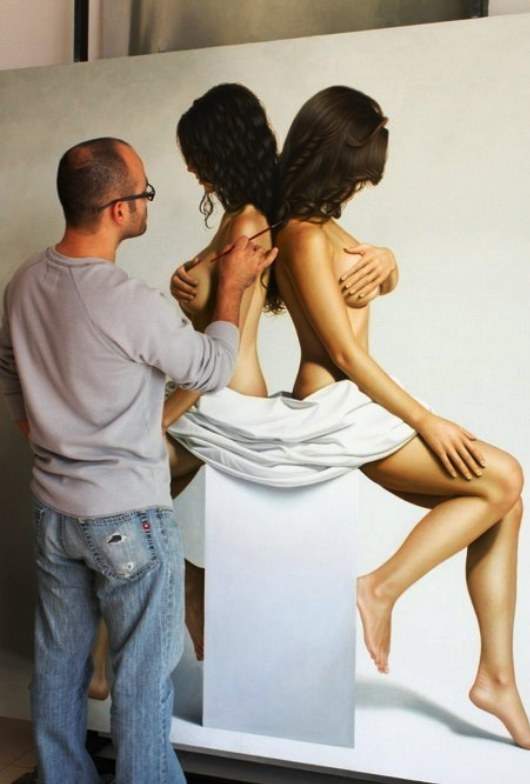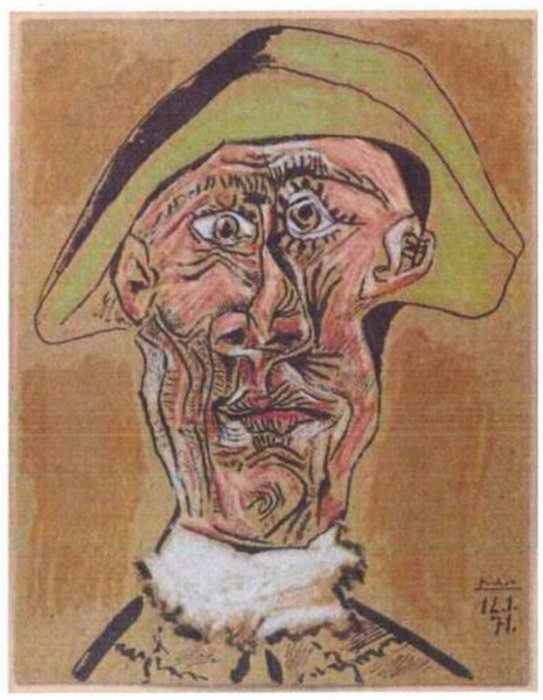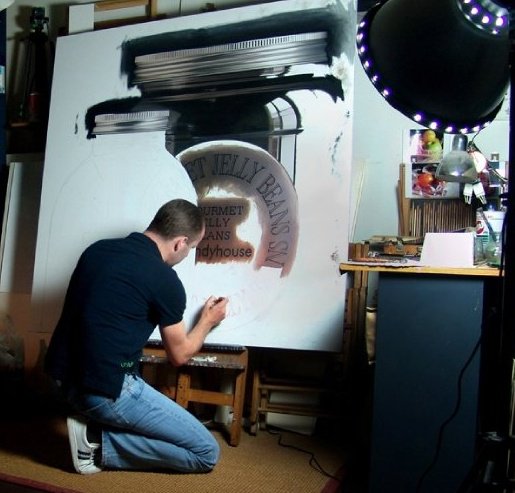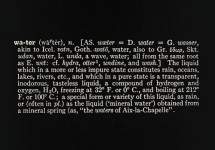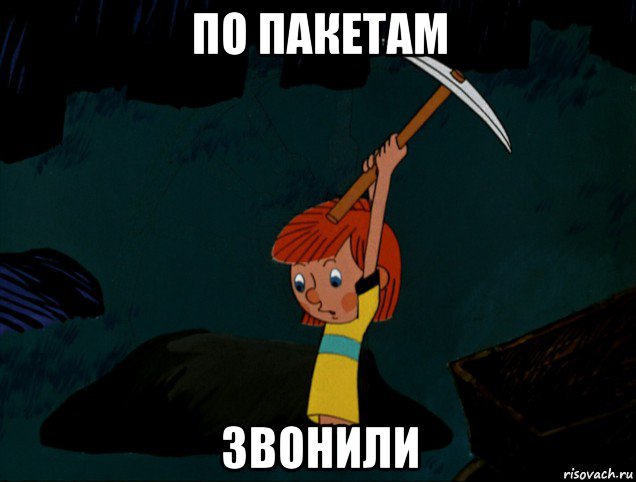Красавица (картина Кустодиева). Кустодиевские красавицы картины
«Красавица» картина Кустодиева
«Красавица» — одна из самых известных картин великого русского художника Бориса Михайловича Кустодиева (1878-1927). 1915 год, холст, масло, 141х185 см. В настоящее время находится в Третьяковской галерее в Москве.
Картина, которая отличается некоторой пикантностью, в наше время представляется классическим изображением русской женщины, которую написал один из самых знаменитых живописцев прошлого. Во времена самого Кустодиева и сейчас картина «Красавица» оказывала и оказывает на зрителя огромное по силе воздействие.
Некий митрополит, увидевший обнажённую русскую красавицу, которую Кустодиев изобразил невероятно реалистично, рассказал, что буквально потерял голову и приписал силу воздействия полотна самому Дьяволу: «Видимо, диавол водил дерзкой рукой художника Кустодиева, когда он писал свою «Кpасавицу», ибо смутил он навек покой мой. Узрел я ее прелесть и ласковость и забыл посты и бдения. Иду в монастырь, где и буду замаливать грехи свои». Конечно же, Дьявол или другие силы тьмы здесь ни при чём. «Виной» тому, что зрителей охватывало сильнейшее чувство при виде картин Кустодиева, только его необыкновенный талант.
Борис Михайлович обладал по-настоящему божественным даром творения. Он видел натуру и свет каким-то неизведанным восьмым чувством, был способен преподать свою мысль и ощущения при помощи красок чрезвычайно реалистично, так что люди получали настолько яркое впечатление, что оно буквально вырывало их из реальности и полностью уносило в мир фантазий и грёз. Однако не только прирождённый талант сделали Кустодиева величайшим мастером русской живописи, но также желание постоянно работать и совершенствоваться, всегда быть оригинальным и превосходить других художников по уровню мастерства. Ещё одним секретом Кустодиева была глубокая любовь к своей стране и культуре русского народа, к русским людям и проявлениям российского общества во всех сферах жизнедеятельности. Любовь к российской культуре представлена в картинах Кустодиева очень наглядно, и это подкупает зрителя, который видит в его работах нечто очень знакомое, будто бы на картине отпечаталась часть истории его самого, история его жизни, случай из прошлого.
Картина «Красавица» была написана в 1915 году. В это время художник уже был прикован к инвалидному креслу. Однако тяжёлое положение не сломило художника. Даже наоборот, его картины стали ещё более красочными, пышными и жизнерадостными. Именно в этот, самый последний период творчества Кустодиева, появились такие картины, как «Красавица», «Купчиха за чаем» и другие. Известно, что картина была написана с натуры, а натурщицей для «Красавицы» стала актриса Художественного театра. Музой для написания картины стала актриса Фаина Васильевна Шевченко (род. 5 апреля 1893 года в Воронеже).
На картине пышнотелая, румяная красавица покидает красочную, расписную кровать. Несмотря на то что красавица обнажена, её вид и поза выглядят целомудренно. Весь образ картины напоминает смесь лубочной живописи, дымковской игрушки, хохломы и современной к тому времени техники живописи. Такое сочетание делает картину не только реалистичной, красивой, красочной, приковывающей взгляд зрителя, но также понятной и родной для человека, который живёт в России и знаком с её традициями.
Картина «Красавица» Б.М.Кустодиев
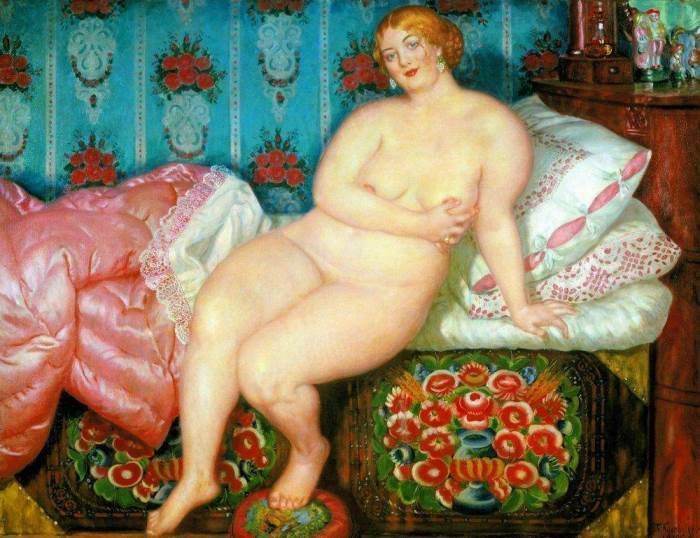
Хотите приобрести предмет искусства для своей коллекции, украшения дома или в подарок? Заходите на сайт аукциона искусств http://artlot24.ru/. Картины, скульптуры, книги, предметы старины и многое другое.
art-assorty.ru
«Кустодиевские красавицы»
05.03.2018 18:00
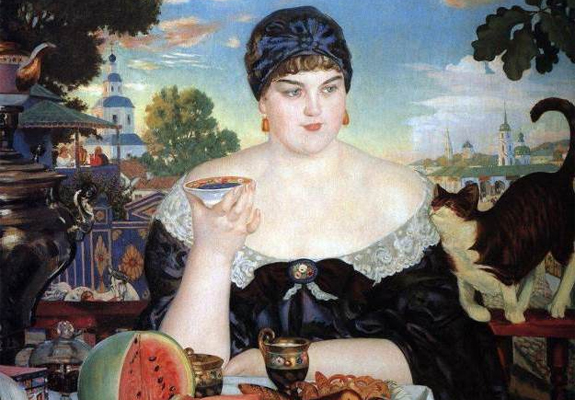 Не знаю, удалось ли мне сделать и выразить в моих вещах то, что я хотел, — любовь к жизни, радость и бодрость, любовь к своему „русскому“ — это было всегда единственным „сюжетом“ моих картин
Не знаю, удалось ли мне сделать и выразить в моих вещах то, что я хотел, — любовь к жизни, радость и бодрость, любовь к своему „русскому“ — это было всегда единственным „сюжетом“ моих картин Кустодиев Б.
7 Марта исполняется 140 лет со дня рождения Бориса Кустодиева. Образы созданных им русских красавиц, наверное, самые известные. Им мы посвящаем сегодня выставку, приуроченную к 8 марта.
Наверное, ни один художник не вызывал такое количество споров и противоречивых оценок, как русский живописец начала ХХ века Борис Кустодиев. Его называли русским Рубенсом, так как он воспевал в своих работах специфическую женскую красоту — наибольшую популярность ему принесли его пышущие здоровьем купчихи и пышнотелые обнаженные русские красавицы.
Обращение Бориса Кустодиева к эстетическим канонам прошлого было своеобразным бегством от реальности — тяжелейшая болезнь (паралич нижней части тела из-за опухоли в позвоночнике) приковала художника к инвалидному креслу. Но, благодаря этим его работам мы можем получить представление о дореволюционной жизни поволжских крестьян и мещан, чей быт так полно и красочно отразился в картинах художника.
Кустодиев — автор целой галереи женских образов. Некоторые критики утверждают, что его творческая манера — это «сон о небывалой России», где дородные женщины символизируют гармонию, покой и уют русского мира.
Жена Кустодиева не обладала такими же пышными формами, как его модели. Но когда его спрашивали, почему он пишет дородных женщин, он отвечал: «Худые женщины на творчество не вдохновляют».
В. Володарский писал о кустодиевской красавице: «Восторг перед плотской красотой этой купчихи, ее здоровьем, примитивной радостью бытия и злая ирония — вот комплект чувств, которые испытываю я при виде картины». Наверное, такие же противоречивые эмоции испытывает и современная публика, глядя на работы художника.
www.domgogolya.ru
"Красавица" Кустодиева. - Журнал "Культурная Столица"
"Красавица" Кустодиева.
"Красавица" Кустодиева.

"Красавицу" Кустодиев неоднократно повторял, причем в разных вариантах - это была одна из его любимых работ. Одну он подарил Горькому – тот обожал эту картину, другую написал по просьбе Шаляпина, с которым дружил. Именно шаляпинская "Красавица" в мае 2003 на лондонском аукционе "Сотбис" ушла за фантастическую сумму – 845 600 фунтов.Безусловно, и сам Кустодиев был влюблен в свою натурщицу...Позировала ему 21-летняя актриса МХАТ Фаина Шевченко - будущая народная артистка СССР, орденоносец и лауреат двух Сталинских премий.Фаина Васильевна Шевченко родилась 17 (5) апреля 1893 г. в Воронеже в зажиточной крестьянской семье. Свой неповторимый голос она унаследовала от отца, певшего в хоре Митрофановского монастыря. Окончив Мариинскую гимназию, Фаина отправилась в Москву учиться на актрису. Блистала на сцене МХАТа до начала 60-х годов, переиграв великое множество ролей. Умерла 10 мая 1971 г.В театральных энциклопедиях ошибочно указано, что Шевченко похоронена в Воронеже. На самом деле актриса покоится на Введенском кладбище в Москве.
В августе 1914 года Борис Кустодиев впервые увидел ее в Художественном театре. Фаина выскочила ему навстречу, чем-то взволнованная и озадаченная. Юная, румяная, пышнотелая. Такой родной и близкий образ из детства. Астраханские купчихи были очень похожи на эту полную девушку. Художнику представили молодую актрису, заметив, что она безумно талантлива. Фаина улыбнулась своей широкой улыбкой и сообщила, что репетирует в спектакле "Смерть Пазухина". После премьеры Кустодиев зашел к ней в гримерку. Робко попросил позировать, она согласилась. Но в мастерской, узнав, что должна снять с себя всю одежду, Шевченко возмутилась:- Ну что вы! - воскликнула она. - Я, актриса Художественного театра, буду голая сидеть?! А потом меня тысячи людей увидят, позор-то какой!
Борис Михайлович нежно ее уговаривал, держал за руку:- Я ж не для себя прошу вас раздеться, а искусства ради.Работалось ему легко. Хотя все чаще мучили боли в пояснице, свидетельствовавшие об опухоли позвоночника. Но были вдохновение и влюбленность, отодвигавшие физические страдания на второй план. Фаина видела, что Кустодиев к ней питает отнюдь не дружеские чувства, но не смущалась...Вновь встретились они в Петрограде на выставке "Мир искусства", где была выставлена "Красавица".- Очень толстая! - недовольно поморщилась Фаина.- Какая есть, - улыбнулся он и поцеловал ее пухлую ручку.
Скандал.Появление картины вызвало поначалу настоящий шок. В эпоху модерна идеалами женской красоты выступали хрупкие, анемичные девицы. А тут вдруг здоровая, дебелая тетка! Посетивший выставку церковный иерарх воскликнул:- Видимо, дьявол водил дерзкой рукой художника Кустодиева, ибо смутил он мой покой.В театре тоже разгорелся скандал. Станиславский кричал на Шевченко так, что стены тряслись, почему она, ведущая актриса, ведет себя как дворовая девка, голышом по перинам скачет.- Прочь с глаз моих, - вопил Константин Сергеевич, - распутница!!!
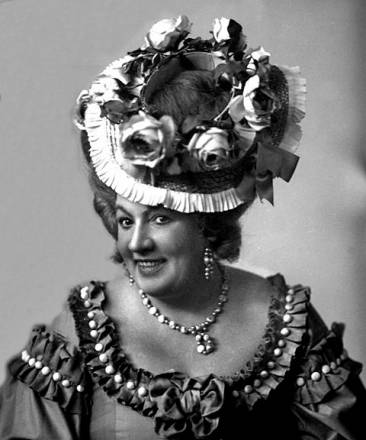 Над Фаиной нависла реальная угроза увольнения. Подружки намекали Фаине, что ей надо худеть. Известная актриса Софья Гиацинтова вспоминала: "Бывало, идем на занятия, а она уже высматривает нас из окна первого этажа. "Девки, - кричит, - идите какао пить с пирожками!" Мы отказываемся и ее уговариваем не распускаться. "На возвратном пути придете, не выпущу! - заливалась она грудным своим смехом. - Пить-есть надо!" И шагу пешком не делала. Все на извозчиках".
Над Фаиной нависла реальная угроза увольнения. Подружки намекали Фаине, что ей надо худеть. Известная актриса Софья Гиацинтова вспоминала: "Бывало, идем на занятия, а она уже высматривает нас из окна первого этажа. "Девки, - кричит, - идите какао пить с пирожками!" Мы отказываемся и ее уговариваем не распускаться. "На возвратном пути придете, не выпущу! - заливалась она грудным своим смехом. - Пить-есть надо!" И шагу пешком не делала. Все на извозчиках".
Брошенная.Гнев Станиславского сменился на милость, Фаина получила новые роли. В эту пору ею увлекся мхатовец Николай Баталов, тот самый, что сыграл в первом советском звуковом фильме "Путевка в жизнь". А служебный роман с актером Григорием Хмарой закончился свадьбой. Та же Гиацинтова вспоминает, что они были завидной супружеской парой.
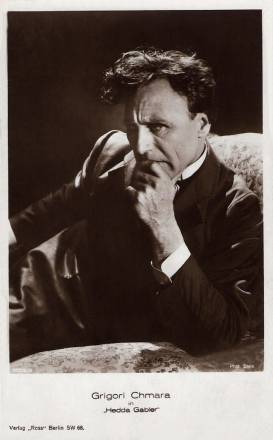
Григорий Хмара в фильме "Гедда Габлер". Германия, 1924 год.
Правда, Хмара погуливал на стороне. Причем любовницами его были противоположные по комплекции супруги женщины: стройные балерины и танцовщицы. В 1922 году он собрался на гастроли в Берлин. Фаина как чувствовала беду, не хотела его отпускать. Заграничная жизнь закрутила Григория. Посыпались предложения от именитых режиссеров, и он остался сниматься в фильме Роберта Вине "Раскольников". Вскоре познакомился со звездой немецкого кино Астой Нильсен. О том, что муж не вернется, Шевченко узнала из короткого письма. Асте было 40, Григорию 30, но это не помешало им пожениться. Правда, союз продлился всего семь лет. Хмара написал Фаине, умолял его простить и похлопотать, чтобы ему разрешили вернуться в Советскую Россию. Шевченко обивала пороги чиновников, но получила отказ. Они так больше никогда и не увиделись. Из Германии Григорий перебрался в Париж, где много снимался. Умер в феврале 1970 года.Фаина пережила его всего на год. Что выпало на ее долю? Она много играла во МХАТе. Как вспоминал Виталий Вульф, сама Раневская взирала на нее с восторгом. Но последние годы жизни Шевченко провела в нищете, забытая всеми.
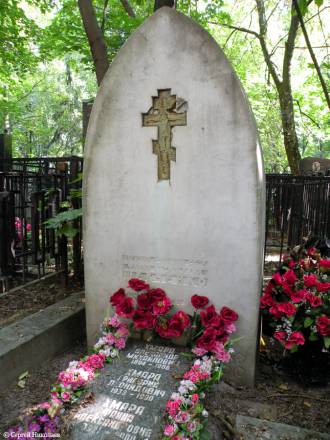
Родни на похоронах не было. Писатель Михаил Шевченко, родственник Фаины Васильевны, признался, что сама актриса была не очень-то приветлива с родными. Она жила сценой, там был ее дом.
Четыре "Красавицы"
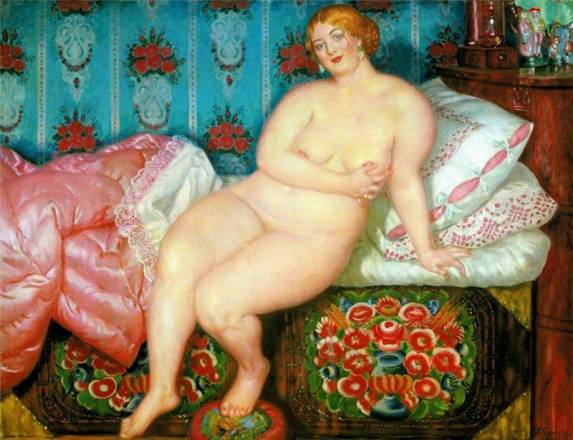
Борис Кустодиев. Красавица. 1915 г.
"Красавицу" Кустодиев неоднократно повторял, причем в разных вариантах - это была одна из его любимых работ. Одну он подарил Горькому – тот обожал эту картину, другую написал по просьбе Шаляпина, с которым дружил. Именно шаляпинская "Красавица" в мае 2003 на лондонском аукционе "Сотбис" ушла за фантастическую сумму – 845 600 фунтов.Безусловно, и сам Кустодиев был влюблен в свою натурщицу.

Борис Кустодиев Красавица. 1918 г.
"Красавица" вскоре была выставлена в Петрограде на выставке "Мир искусства". Фаине картина не понравилась, уж очень толстой показалась она себе самой. Впрочем, худеть она и не думала.

Борис Кустодиев. Красавица. 1919 г.
Актриса МХАТ Софья Гиацинтова вспоминала: "Бывало, идем на занятия, а она уже высматривает нас из окна первого этажа. "Девки, - кричит, - идите какао пить с пирожками!" Мы отказываемся и ее уговариваем не распускаться. "На возвратном пути придете, не выпущу! - заливалась она грудным своим смехом. - Пить-есть надо!" И шагу пешком не делала. Все на извозчиках".И правильно делала! Ее любили и такой.
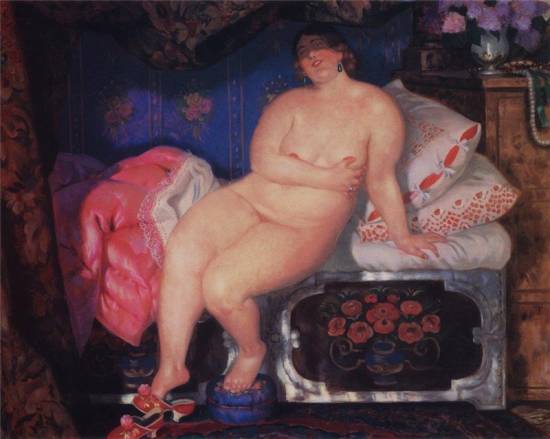
Борис Кустодиев. Красавица. 1921 г.
kstolica.ru
WikiZero - Красавица (картина Кустодиева)
Wikipedia Open wikipedia design.У этого термина существуют и другие значения, см. Красавица.«Краса́вица» — картина русского художника Бориса Кустодиева, написанная им в 1915 году.
На картине изображена красавица-купчиха, пробудившаяся ото сна и полусидящая на перине в сладостном ожидании неопределённости. Работа наполнена сочетанием национального романтизма, в частности лубка, с неоклассицизмом, таким как, например, у Тициана и Рубенса. В образе главной героини картины Кустодиевым запечатлена актриса Московского Художественного театра Фаина Шевченко, обладавшая пышными формами. Такой типаж был любимым у художника, отмечавшего, что «худые женщины на творчество не вдохновляют». Позднее он создал ещё три картины, отличающихся незначительными вариациями в композиции. По-видимому, Кустодиев считал «Красавицу» своего рода программной работой и итогом исканий своего художественного стиля. Оригинальная картина 1915 года в настоящее время находится в коллекции Государственной Третьяковской галереи в Москве, как и вариант 1921 года. Варианты 1918 и 1919 годов хранятся в Тульском музее изобразительных искусств и частной коллекции в России соответственно.
«Автопортрет у окна», КустодиевКак члена объединения «Мир искусства», Кустодиева интересовали не только образы дворянской культуры, но и провинциальный быт — он был настоящим поэтом купечества[1][2]. Купчихи Кустодиева — это своего рода богини, выразители народных представлений о счастье, сытости и достатке[3]. Однако во многих его жанровых полотнах на тему купечества народный, русский идеал женской красоты приобретал особую монументальность в гиперболизированных формах, сочетавшую в себе одновременно восхищение, иронию и гротеск, современность и прошлое, реальность и вымысел[4][5][3]. Появилось даже выражение «кустодиевские красавицы», которые населяют особый сказочный мир, в котором сохранился разрушавшийся прямо на глазах старый уклад патриархальной России с купчихами и народными гуляньями в тихих провинциальных городах. В ту небывалую кустодиевскую Русь, полную жизни, свет
www.wikizero.com
Красавица (Кустодиев) Википедия
У этого термина существуют и другие значения, см. Красавица.«Краса́вица» — картина русского художника Бориса Кустодиева, написанная им в 1915 году.
На картине изображена красавица-купчиха, пробудившаяся ото сна и полусидящая на перине в сладостном ожидании неопределённости. Работа наполнена сочетанием национального романтизма, в частности лубка, с неоклассицизмом, таким как, например, у Тициана и Рубенса. В образе главной героини картины Кустодиевым запечатлена актриса Московского Художественного театра Фаина Шевченко, обладавшая пышными формами. Такой типаж был любимым у художника, отмечавшего, что «худые женщины на творчество не вдохновляют». Позднее он создал ещё три картины, отличающихся незначительными вариациями в композиции. По-видимому, Кустодиев считал «Красавицу» своего рода программной работой и итогом исканий своего художественного стиля. Оригинальная картина 1915 года в настоящее время находится в коллекции Государственной Третьяковской галереи в Москве, как и вариант 1921 года. Варианты 1918 и 1919 годов хранятся в Тульском музее изобразительных искусств и частной коллекции в России соответственно.
История и создание[ | код]
«Автопортрет у окна», КустодиевКак члена объединения «Мир искусства», Кустодиева интересовали не только образы дворянской культуры, но и провинциальный быт — он был настоящим поэтом купечества[1][2]. Купчихи Кустодиева — это своего рода богини, выразители народных представлений о счастье, сытости и достатке[3]. Однако во многих его жанровых полотнах на тему купечества народный, русский идеал женской красоты приобретал особую монументальность в гиперболизированных формах, сочетавшую в себе одновременно восхищение, иронию и гротеск, современность и прошлое, реальность и вымысел[4][5][3]. Появилось даже выражение «кустодиевские красавицы», которые населяют особый сказочный мир, в котором сохранился разрушавшийся прямо на глазах старый уклад патриархальной России с купчихами и народными гуляньями в тихих провинциальных городах. В ту небывалую кустодиевскую Русь, полную жизни, света и сил, изобилия и музыки, красок и веселья, и бежал от обыденности художник, прикованный к инвалидной коляске[6][7][8][9][10]. «Красавица» была написана Кустодиевым на пике болезни — опухоли спинного мозга, по причине которой он провёл последние 15 лет своей жизни с парализованными ногами[11].
ru-wiki.ru
Красавица (картина Кустодиева) - WikiVisually
1. Кустодиев, Борис Михайлович – Boris Mikhaylovich Kustodiev was a Russian painter and stage designer. Boris Kustodiev was born in Astrakhan into the family of a professor of philosophy, history of literature and his father died young, and all financial and material burdens fell on his mothers shoulders. The Kustodiev family rented a wing in a rich merchants house. It was there that the boys first impressions were formed of the way of life of the merchant class. The artist later wrote, The whole tenor of the rich and it was like something out of an Ostrovsky play. The artist retained these childhood observations for years, recreating them later in oils, between 1893 and 1896, Boris studied in theological seminary and took private art lessons in Astrakhan from Pavel Vlasov, a pupil of Vasily Perov. Subsequently, from 1896 to 1903, he attended Ilya Repin’s studio at the Imperial Academy of Arts in St. Petersburg, concurrently, he took classes in sculpture under Dmitry Stelletsky and in etching under Vasiliy Mate. I have great hopes for Kustodiev, wrote Repin and he is a talented artist and a thoughtful and serious man with a deep love of art, he is making a careful study of nature. When Repin was commissioned to paint a canvas to commemorate the 100th anniversary of the State Council. The painting was extremely complex and involved a great deal of hard work, together with his teacher, the young artist made portrait studies for the painting, and then executed the right-hand side of the final work. Also at this time, Kustodiev made a series of portraits of contemporaries whom he felt to be his spiritual comrades and these included the artist Ivan Bilibin, Moldovtsev, and the engraver Mate. Working on these portraits considerably helped the artist, forcing him to make a study of his model. In 1903, he married Julia Proshinskaya and he visited France and Spain on a grant from the Imperial Academy of Arts in 1904. Also in 1904, he attended the studio of René Ménard in Paris. After that he traveled to Spain, then, in 1907, to Italy, and in 1909 he visited Austria and Germany, during these years he painted many portraits and genre pieces. However, no matter where Kustodiev happened to be – in sunny Seville or in the park at Versailles – he felt the pull of his motherland. After five months in France he returned to Russia, writing with evident joy to his friend Mate that he was once more in our blessed Russian land. The Russian Revolution of 1905, which shook the foundations of society and he contributed to the satirical journals Zhupel and Adskaya Pochta
2. Холст – Canvas is an extremely durable plain-woven fabric used for making sails, tents, marquees, backpacks, and other items for which sturdiness is required. It is also used by artists as a painting surface. It is also used in such objects as handbags, electronic device cases. The word canvas is derived from the 13th century Anglo-French canevaz, both may be derivatives of the Vulgar Latin cannapaceus for made of hemp, originating from the Greek κάνναβις. Modern canvas is made of cotton or linen, although. It differs from other cotton fabrics, such as denim. Canvas comes in two types, plain and duck. The threads in duck canvas are more tightly woven, the term duck comes from the Dutch word for cloth, doek. In the United States, canvas is classified in two ways, by weight and by a number system. The numbers run in reverse of the weight so a number 10 canvas is lighter than number 4, canvas has become the most common support medium for oil painting, replacing wooden panels. One of the earliest surviving oils on canvas is a French Madonna with angels from around 1410 in the Gemäldegalerie, however, panel painting remained more common until the 16th century in Italy and the 17th century in Northern Europe. Mantegna and Venetian artists were among those leading the change, Venetian sail canvas was readily available, as lead-based paint is poisonous, care has to be taken in using it. Early canvas was made of linen, a sturdy brownish fabric of considerable strength, linen is particularly suitable for the use of oil paint. In the early 20th century, cotton canvas, often referred to as cotton duck, linen is composed of higher quality material, and remains popular with many professional artists, especially those who work with oil paint. Cotton duck, which stretches more fully and has an even, mechanical weave, the advent of acrylic paint has greatly increased the popularity and use of cotton duck canvas. Linen and cotton derive from two different plants, the flax plant and the cotton plant, respectively. Gessoed canvases on stretchers are also available and they are available in a variety of weights, light-weight is about 4 oz or 5 oz, medium-weight is about 7 oz or 8 oz, heavy-weight is about 10 oz or 12 oz. They are prepared with two or three coats of gesso and are ready for use straight away, artists desiring greater control of their painting surface may add a coat or two of their preferred gesso
3. Масляная живопись – Oil painting is the process of painting with pigments with a medium of drying oil as the binder. Commonly used drying oils include linseed oil, poppy seed oil, walnut oil, the choice of oil imparts a range of properties to the oil paint, such as the amount of yellowing or drying time. Certain differences, depending on the oil, are visible in the sheen of the paints. An artist might use different oils in the same painting depending on specific pigments and effects desired. The paints themselves also develop a particular consistency depending on the medium, the oil may be boiled with a resin, such as pine resin or frankincense, to create a varnish prized for its body and gloss. Its practice may have migrated westward during the Middle Ages, Oil paint eventually became the principal medium used for creating artworks as its advantages became widely known. In recent years, water miscible oil paint has come to prominence and, to some extent, water-soluble paints contain an emulsifier that allows them to be thinned with water rather than paint thinner, and allows very fast drying times when compared with traditional oils. Traditional oil painting techniques often begin with the artist sketching the subject onto the canvas with charcoal or thinned paint, Oil paint is usually mixed with linseed oil, artist grade mineral spirits, or other solvents to make the paint thinner, faster or slower-drying. A basic rule of oil paint application is fat over lean and this means that each additional layer of paint should contain more oil than the layer below to allow proper drying. If each additional layer contains less oil, the painting will crack. This rule does not ensure permanence, it is the quality and type of oil leads to a strong. There are many media that can be used with the oil, including cold wax, resins. These aspects of the paint are closely related to the capacity of oil paint. Traditionally, paint was transferred to the surface using paintbrushes. Oil paint remains wet longer than other types of artists materials, enabling the artist to change the color. At times, the painter might even remove a layer of paint. This can be done with a rag and some turpentine for a time while the paint is wet, Oil paint dries by oxidation, not evaporation, and is usually dry to the touch within a span of two weeks. It is generally dry enough to be varnished in six months to a year, art conservators do not consider an oil painting completely dry until it is 60 to 80 years old
4. Государственная Третьяковская галерея – The State Tretyakov Gallery is an art gallery in Moscow, Russia, the foremost depository of Russian fine art in the world. In 1892, Tretyakov presented his famous collection of approximately 2,000 works to the Russian nation. The façade of the building was designed by the painter Viktor Vasnetsov in a peculiar Russian fairy-tale style. It was built in 1902–04 to the south from the Moscow Kremlin, during the 20th century, the gallery expanded to several neighboring buildings, including the 17th-century church of St. Nicholas in Tolmachi. In 1977 the Gallery kept a significant part of the George Costakis collection, Pavel Tretyakov started collecting art in the middle of 1850. The founding year of the Tretyakov Gallery is considered to be 1856, schilder and Skirmish with Finnish Smugglers by V. G. Kudyakov, although earlier, in 1854-1855, he had bought 11 graphic sheets and 9 pictures of old Dutch masters, in 1867 the Moscow City Gallery of Pavel and Sergei Tretyakov was opened. The Gallery’s collection consisted of 1,276 paintings,471 sculptures and 10 drawings of Russian artists, in August 1892 Tretyakov presented his art gallery to the city of Moscow as a gift. In the collection at time, there were 1,287 paintings and 518 graphic works of the Russian school,75 paintings and 8 drawings of European schools,15 sculptures. The official opening of the called the Moscow City Gallery of Pavel. The gallery was located in a mansion that the Tretykov family had purchased in 1851. As the Tretyakov collection of art grew, the part of the mansion filled with art and it became necessary to make additions to the mansion in order to store. Additions were made in 1873,1882,1885,1892 and 1902-1904, construction of the façade was managed by the architect A. M. In early 1913, the Moscow City Duma elected Igor Grabar as a trustee of the Tretyakov Gallery, on June 3,1918, the Tretyakov Gallery was declared owned by Russian Federated Soviet Republic and was named the State Tretyakov Gallery. Igor Grabar was again appointed director of the museum, with Grabar’s active participation in the same year, the State Museum Fund was created, which up until 1927 remained one of the most important sources of replenishment of the gallerys collection. In 1926 architect and academician A. V, shchusev became the director of the gallery. In the following year the gallery acquired the house on Maly Tolmachevsky Lane. After restructuring in 1928, it housed the administration, academic departments, library, manuscripts department
5. Москва – Moscow is the capital and most populous city of Russia, with 13.2 million residents within the city limits and 17.8 million within the urban area. Moscow has the status of a Russian federal city, Moscow is a major political, economic, cultural, and scientific center of Russia and Eastern Europe, as well as the largest city entirely on the European continent. Moscow is the northernmost and coldest megacity and metropolis on Earth and it is home to the Ostankino Tower, the tallest free standing structure in Europe, the Federation Tower, the tallest skyscraper in Europe, and the Moscow International Business Center. Moscow is situated on the Moskva River in the Central Federal District of European Russia, the city is well known for its architecture, particularly its historic buildings such as Saint Basils Cathedral with its brightly colored domes. Moscow is the seat of power of the Government of Russia, being the site of the Moscow Kremlin, the Moscow Kremlin and Red Square are also one of several World Heritage Sites in the city. Both chambers of the Russian parliament also sit in the city and it is recognized as one of the citys landmarks due to the rich architecture of its 200 stations. In old Russian the word also meant a church administrative district. The demonym for a Moscow resident is москвич for male or москвичка for female, the name of the city is thought to be derived from the name of the Moskva River. There have been proposed several theories of the origin of the name of the river and its cognates include Russian, музга, muzga pool, puddle, Lithuanian, mazgoti and Latvian, mazgāt to wash, Sanskrit, majjati to drown, Latin, mergō to dip, immerse. There exist as well similar place names in Poland like Mozgawa, the original Old Russian form of the name is reconstructed as *Москы, *Mosky, hence it was one of a few Slavic ū-stem nouns. From the latter forms came the modern Russian name Москва, Moskva, in a similar manner the Latin name Moscovia has been formed, later it became a colloquial name for Russia used in Western Europe in the 16th–17th centuries. From it as well came English Muscovy, various other theories, having little or no scientific ground, are now largely rejected by contemporary linguists. The surface similarity of the name Russia with Rosh, an obscure biblical tribe or country, the oldest evidence of humans on the territory of Moscow dates from the Neolithic. Within the modern bounds of the city other late evidence was discovered, on the territory of the Kremlin, Sparrow Hills, Setun River and Kuntsevskiy forest park, etc. The earliest East Slavic tribes recorded as having expanded to the upper Volga in the 9th to 10th centuries are the Vyatichi and Krivichi, the Moskva River was incorporated as part of Rostov-Suzdal into the Kievan Rus in the 11th century. By AD1100, a settlement had appeared on the mouth of the Neglinnaya River. The first known reference to Moscow dates from 1147 as a place of Yuri Dolgoruky. At the time it was a town on the western border of Vladimir-Suzdal Principality
6. Россия – Russia, also officially the Russian Federation, is a country in Eurasia. The European western part of the country is more populated and urbanised than the eastern. Russias capital Moscow is one of the largest cities in the world, other urban centers include Saint Petersburg, Novosibirsk, Yekaterinburg, Nizhny Novgorod. Extending across the entirety of Northern Asia and much of Eastern Europe, Russia spans eleven time zones and incorporates a range of environments. It shares maritime borders with Japan by the Sea of Okhotsk, the East Slavs emerged as a recognizable group in Europe between the 3rd and 8th centuries AD. Founded and ruled by a Varangian warrior elite and their descendants, in 988 it adopted Orthodox Christianity from the Byzantine Empire, beginning the synthesis of Byzantine and Slavic cultures that defined Russian culture for the next millennium. Rus ultimately disintegrated into a number of states, most of the Rus lands were overrun by the Mongol invasion. The Soviet Union played a role in the Allied victory in World War II. The Soviet era saw some of the most significant technological achievements of the 20th century, including the worlds first human-made satellite and the launching of the first humans in space. By the end of 1990, the Soviet Union had the second largest economy, largest standing military in the world. It is governed as a federal semi-presidential republic, the Russian economy ranks as the twelfth largest by nominal GDP and sixth largest by purchasing power parity in 2015. Russias extensive mineral and energy resources are the largest such reserves in the world, making it one of the producers of oil. The country is one of the five recognized nuclear weapons states and possesses the largest stockpile of weapons of mass destruction, Russia is a great power as well as a regional power and has been characterised as a potential superpower. The name Russia is derived from Rus, a state populated mostly by the East Slavs. However, this name became more prominent in the later history, and the country typically was called by its inhabitants Русская Земля. In order to distinguish this state from other states derived from it, it is denoted as Kievan Rus by modern historiography, an old Latin version of the name Rus was Ruthenia, mostly applied to the western and southern regions of Rus that were adjacent to Catholic Europe. The current name of the country, Россия, comes from the Byzantine Greek designation of the Kievan Rus, the standard way to refer to citizens of Russia is Russians in English and rossiyane in Russian. There are two Russian words which are translated into English as Russians
7. Романтический национализм – Romantic nationalism is the form of nationalism in which the state derives its political legitimacy as an organic consequence of the unity of those it governs. This includes, depending on the manner of practice, the language, race, culture, religion. Such downward-radiating power might ultimately derive from a god or gods, among the key themes of Romanticism, and its most enduring legacy, the cultural assertions of romantic nationalism have also been central in post-Enlightenment art and political philosophy. The ideas of Rousseau and of Johann Gottfried von Herder inspired much early Romantic nationalism in Europe, in 1784 Herder argued that geography formed the natural economy of a people, and that their customs and society would develop along the lines that their basic environment favored. The Brothers Grimm, inspired by Herders writings, put together a collection of tales. Because of the Germans role in the Protestant Reformation, Hegel argued that his historical moment had seen the Zeitgeist settle on the German-speaking peoples. In continental Europe, Romantics had embraced the French Revolution in its beginnings, in Prussia, the development of spiritual renewal as a means to engage in the struggle against Napoleon was argued by, among others, Johann Gottlieb Fichte, a disciple of Kant. The word Volkstum, or folkhood, was coined in Germany as part of resistance to French hegemony. In the Balkans, Romantic views of a connection with classical Greece, verdis opera choruses of an oppressed people inspired two generations of patriots in Italy, especially with Va pensiero. In Norway, romanticism was embodied, not in literature, but in the movement toward a national style, following the Congress of Vienna, and subsequent Concert of Europe system, several major empires took control of European politics. Among these were the Russian Empire, the restored French monarchy, the German Confederation, under the dominance of Prussia, the Austrian Empire, the conservative forces held sway until the Revolutions of 1848 swept across Europe and threatened the old order. Numerous movements developed around various cultural groups, who began to develop a sense of national identity, Romantic nationalists expected patriots to then learn that language and raise their children speaking that language – as part of a general program to establish a unique identity. Katharevousa Greek was constructed as a form of Modern Greek drawing on classical Greek morphology, the linguistic processes of romantic nationalism demanded linguistic culture models. Romantic historiography was centered on biographies and produced culture heroes, the modern Italian of Risorgimento patriots like Alessandro Manzoni was based on the Tuscan dialects sanctified by Dante and Petrarch. In English, Shakespeare became an iconic figure, Romantic nationalism inspired the collection of folklore by such people as the Brothers Grimm. The Brothers Grimm were criticized because their first edition was insufficiently German and they also altered the language used, changing each Fee to an enchantress or wise woman, every prince to a kings son, every princess to a kings daughter. Discussing these views in their editions, they particularly singled out Giambattista Basiles Pentamerone as the first national collection of fairy tales. Among those influenced were the Russian Alexander Afanasyev, the Norwegians Peter Christen Asbjørnsen and Jørgen Moe, many artists and writers also drew on their native countries folklore and folktunes for their own work to express their nationalism
8. Лубок – A lubok is a Russian popular print, characterized by simple graphics and narratives derived from literature, religious stories and popular tales. Lubki prints were used as decoration in houses and inns, early examples from the late 17th and early 18th centuries were woodcuts, then engravings or etchings were typical, and from the mid-19th century lithography. They sometimes appeared in series, which might be regarded as predecessors of the comic strip. Cheap and simple books, similar to chapbooks, which consisted of pictures, are called lubok literature or. Both pictures and literature are commonly referred to simply as lubki, the Russian word lubok derives from lub - a special type of board that pictures were printed on. Russian lubki became a genre of during the last half of the seventeenth century. Russian lubok was primarily influenced by the woodcuts and engravings done in Germany, Italy and its popularity in Russia was a result of how inexpensive and fairly simple it was to duplicate a print using this new technique. Luboks were typically sold at various marketplaces to the lower and middle classes and this type of art was very popular with these two social classes because the lubok provided them with an inexpensive opportunity to display artwork in their houses. The Koren Picture-Bible, 1692-1696 established the most prominent style, an Old Russian rendering of international iconography and subjects, by mid-18th century, however, the woodcuts were mostly replaced with engraving or etching techniques, which enabled the prints to be more detailed and complex. After printing on paper, the picture would be hand-colored with diluted tempera paints, while the prints themselves were typically very simplistic and unadorned, the final product, with the tempera paint added, was surprisingly bright with vivid colors and lines. The dramatic coloring of the early woodcut prints was to some extent lost with the transfer to more detailed engravings, in addition to the images, these folk prints would also include a short story or lesson that correlated to the picture being presented. Russian scholar Alexander Boguslavsky claims that the style is a combination of Russian icon and manuscript painting traditions with the ideas. Typically, the luboks artist would include minimal text that was supplementary to the illustration that would cover the majority of the engraving. Folklorist Dmitri Rovinsky is known for his work with categorizing lubok. Jewish examples exist as well, many luboks can be classified into multiple categories. Russian lubok The satirical version played an important role in the luboks from Russian wartime and it is used to present Napoleon in a satirical manner while portraying the Russian peasants as the heroes of the war. This also inspired other Russians to help fight the war by attempting to, the luboks presented a manner for the Russians to mock the French enemy, while at the same time display the ‘Russianness” of Russia. “These war luboks satirized Napoleon and depicted French culture as degenerate”, the lubok was a means of reinforcing the idea of defeating the French invaders and displaying the horrible destruction Napoleon and his army caused Russia. All the different representation of the Russian heroes helped define and spread the belief in Russian identity, the Russo-Japanese War of 1904–1905 began on February 8,1904, at Port Arthur with a surprise attack by the Imperial Japanese Navy
9. Неоклассицизм – The main Neoclassical movement coincided with the 18th-century Age of Enlightenment, and continued into the early 19th century, laterally competing with Romanticism. In architecture, the style continued throughout the 19th, 20th, European Neoclassicism in the visual arts began c.1760 in opposition to the then-dominant Baroque and Rococo styles. Each neo-classicism selects some models among the range of classics that are available to it. They ignored both Archaic Greek art and the works of Late Antiquity, the Rococo art of ancient Palmyra came as a revelation, through engravings in Woods The Ruins of Palmyra. While the movement is described as the opposed counterpart of Romanticism. The case of the main champion of late Neoclassicism, Ingres, demonstrates this especially well. The revival can be traced to the establishment of formal archaeology, the writings of Johann Joachim Winckelmann were important in shaping this movement in both architecture and the visual arts. With the advent of the Grand Tour, a fad of collecting antiquities began that laid the foundations of many great collections spreading a Neoclassical revival throughout Europe, Neoclassicism in each art implies a particular canon of a classical model. In English, the term Neoclassicism is used primarily of the arts, the similar movement in English literature. This, which had been dominant for decades, was beginning to decline by the time Neoclassicism in the visual arts became fashionable. Though terms differ, the situation in French literature was similar, in music, the period saw the rise of classical music, and Neoclassicism is used of 20th-century developments. Ingress coronation portrait of Napoleon even borrowed from Late Antique consular diptychs and their Carolingian revival, much Neoclassical painting is more classicizing in subject matter than in anything else. A fierce, but often very badly informed, dispute raged for decades over the merits of Greek and Roman art, with Winckelmann. The work of artists, who could not easily be described as insipid, combined aspects of Romanticism with a generally Neoclassical style. Unlike Carstens unrealized schemes, the etchings of Giovanni Battista Piranesi were numerous and profitable and his main subject matter was the buildings and ruins of Rome, and he was more stimulated by the ancient than the modern. Neoclassicism in painting gained a new sense of direction with the success of Jacques-Louis Davids Oath of the Horatii at the Paris Salon of 1785. Despite its evocation of republican virtues, this was a commission by the royal government, David managed to combine an idealist style with drama and forcefulness. David rapidly became the leader of French art, and after the French Revolution became a politician with control of government patronage in art
10. Тициан – Tiziano Vecelli or Tiziano Vecellio, known in English as Titian /ˈtɪʃən/, was an Italian painter, the most important member of the 16th-century Venetian school. He was born in Pieve di Cadore, near Belluno, during his lifetime he was often called da Cadore, taken from the place of his birth. His painting methods, particularly in the application and use of color, would exercise a profound influence not only on painters of the Italian Renaissance, during the course of his long life, Titians artistic manner changed drastically, but he retained a lifelong interest in color. Although his mature works may not contain the vivid, luminous tints of his pieces, their loose brushwork. The exact date of Titians birth is uncertain, when he was an old man he claimed in a letter to Philip II, King of Spain, to have been born in 1474, but this seems most unlikely. Other writers contemporary to his old age give figures that would equate to birthdates between 1473 and after 1482 and he was the son of Gregorio Vecelli and his wife Lucia. His father was superintendent of the castle of Pieve di Cadore, Gregorio was also a distinguished councilor and soldier. Many relatives, including Titians grandfather, were notaries, and the family of four were well-established in the area, at the age of about ten to twelve he and his brother Francesco were sent to an uncle in Venice to find an apprenticeship with a painter. At that time the Bellinis, especially Giovanni, were the artists in the city. There Titian found a group of men about his own age, among them Giovanni Palma da Serinalta, Lorenzo Lotto, Sebastiano Luciani. Francesco Vecellio, his brother, later became a painter of some note in Venice. A fresco of Hercules on the Morosini Palace is said to have one of Titians earliest works. Others were the Bellini-esque so-called Gypsy Madonna in Vienna, and the Visitation of Mary and Elizabeth, now in the Accademia, a Man with a Quilted Sleeve is an early portrait, painted around 1509 and described by Giorgio Vasari in 1568. Scholars long believed it depicted Ludovico Ariosto, but now think it is of Gerolamo Barbarigo, Rembrandt borrowed the composition for his self-portraits. Titian joined Giorgione as an assistant, but many contemporary critics found his work more impressive—for example in exterior frescoes that they did for the Fondaco dei Tedeschi. Their relationship evidently contained a significant element of rivalry, distinguishing between their work at this period remains a subject of scholarly controversy. A substantial number of attributions have moved from Giorgione to Titian in the 20th century, one of the earliest known Titian works, Christ Carrying the Cross in the Scuola Grande di San Rocco, depicting the Ecce Homo scene, was long regarded as by Giorgione. In 1507–1508 Giorgione was commissioned by the state to create frescoes on the re-erected Fondaco dei Tedeschi, Titian and Morto da Feltre worked along with him, and some fragments of paintings remain, probably by Giorgione
wikivisually.com
Красавица (картина Кустодиева) - WikiVisually
1. Кустодиев, Борис Михайлович – Boris Mikhaylovich Kustodiev was a Russian painter and stage designer. Boris Kustodiev was born in Astrakhan into the family of a professor of philosophy, history of literature and his father died young, and all financial and material burdens fell on his mothers shoulders. The Kustodiev family rented a wing in a rich merchants house. It was there that the boys first impressions were formed of the way of life of the merchant class. The artist later wrote, The whole tenor of the rich and it was like something out of an Ostrovsky play. The artist retained these childhood observations for years, recreating them later in oils, between 1893 and 1896, Boris studied in theological seminary and took private art lessons in Astrakhan from Pavel Vlasov, a pupil of Vasily Perov. Subsequently, from 1896 to 1903, he attended Ilya Repin’s studio at the Imperial Academy of Arts in St. Petersburg, concurrently, he took classes in sculpture under Dmitry Stelletsky and in etching under Vasiliy Mate. I have great hopes for Kustodiev, wrote Repin and he is a talented artist and a thoughtful and serious man with a deep love of art, he is making a careful study of nature. When Repin was commissioned to paint a canvas to commemorate the 100th anniversary of the State Council. The painting was extremely complex and involved a great deal of hard work, together with his teacher, the young artist made portrait studies for the painting, and then executed the right-hand side of the final work. Also at this time, Kustodiev made a series of portraits of contemporaries whom he felt to be his spiritual comrades and these included the artist Ivan Bilibin, Moldovtsev, and the engraver Mate. Working on these portraits considerably helped the artist, forcing him to make a study of his model. In 1903, he married Julia Proshinskaya and he visited France and Spain on a grant from the Imperial Academy of Arts in 1904. Also in 1904, he attended the studio of René Ménard in Paris. After that he traveled to Spain, then, in 1907, to Italy, and in 1909 he visited Austria and Germany, during these years he painted many portraits and genre pieces. However, no matter where Kustodiev happened to be – in sunny Seville or in the park at Versailles – he felt the pull of his motherland. After five months in France he returned to Russia, writing with evident joy to his friend Mate that he was once more in our blessed Russian land. The Russian Revolution of 1905, which shook the foundations of society and he contributed to the satirical journals Zhupel and Adskaya Pochta
2. Холст – Canvas is an extremely durable plain-woven fabric used for making sails, tents, marquees, backpacks, and other items for which sturdiness is required. It is also used by artists as a painting surface. It is also used in such objects as handbags, electronic device cases. The word canvas is derived from the 13th century Anglo-French canevaz, both may be derivatives of the Vulgar Latin cannapaceus for made of hemp, originating from the Greek κάνναβις. Modern canvas is made of cotton or linen, although. It differs from other cotton fabrics, such as denim. Canvas comes in two types, plain and duck. The threads in duck canvas are more tightly woven, the term duck comes from the Dutch word for cloth, doek. In the United States, canvas is classified in two ways, by weight and by a number system. The numbers run in reverse of the weight so a number 10 canvas is lighter than number 4, canvas has become the most common support medium for oil painting, replacing wooden panels. One of the earliest surviving oils on canvas is a French Madonna with angels from around 1410 in the Gemäldegalerie, however, panel painting remained more common until the 16th century in Italy and the 17th century in Northern Europe. Mantegna and Venetian artists were among those leading the change, Venetian sail canvas was readily available, as lead-based paint is poisonous, care has to be taken in using it. Early canvas was made of linen, a sturdy brownish fabric of considerable strength, linen is particularly suitable for the use of oil paint. In the early 20th century, cotton canvas, often referred to as cotton duck, linen is composed of higher quality material, and remains popular with many professional artists, especially those who work with oil paint. Cotton duck, which stretches more fully and has an even, mechanical weave, the advent of acrylic paint has greatly increased the popularity and use of cotton duck canvas. Linen and cotton derive from two different plants, the flax plant and the cotton plant, respectively. Gessoed canvases on stretchers are also available and they are available in a variety of weights, light-weight is about 4 oz or 5 oz, medium-weight is about 7 oz or 8 oz, heavy-weight is about 10 oz or 12 oz. They are prepared with two or three coats of gesso and are ready for use straight away, artists desiring greater control of their painting surface may add a coat or two of their preferred gesso
3. Масляная живопись – Oil painting is the process of painting with pigments with a medium of drying oil as the binder. Commonly used drying oils include linseed oil, poppy seed oil, walnut oil, the choice of oil imparts a range of properties to the oil paint, such as the amount of yellowing or drying time. Certain differences, depending on the oil, are visible in the sheen of the paints. An artist might use different oils in the same painting depending on specific pigments and effects desired. The paints themselves also develop a particular consistency depending on the medium, the oil may be boiled with a resin, such as pine resin or frankincense, to create a varnish prized for its body and gloss. Its practice may have migrated westward during the Middle Ages, Oil paint eventually became the principal medium used for creating artworks as its advantages became widely known. In recent years, water miscible oil paint has come to prominence and, to some extent, water-soluble paints contain an emulsifier that allows them to be thinned with water rather than paint thinner, and allows very fast drying times when compared with traditional oils. Traditional oil painting techniques often begin with the artist sketching the subject onto the canvas with charcoal or thinned paint, Oil paint is usually mixed with linseed oil, artist grade mineral spirits, or other solvents to make the paint thinner, faster or slower-drying. A basic rule of oil paint application is fat over lean and this means that each additional layer of paint should contain more oil than the layer below to allow proper drying. If each additional layer contains less oil, the painting will crack. This rule does not ensure permanence, it is the quality and type of oil leads to a strong. There are many media that can be used with the oil, including cold wax, resins. These aspects of the paint are closely related to the capacity of oil paint. Traditionally, paint was transferred to the surface using paintbrushes. Oil paint remains wet longer than other types of artists materials, enabling the artist to change the color. At times, the painter might even remove a layer of paint. This can be done with a rag and some turpentine for a time while the paint is wet, Oil paint dries by oxidation, not evaporation, and is usually dry to the touch within a span of two weeks. It is generally dry enough to be varnished in six months to a year, art conservators do not consider an oil painting completely dry until it is 60 to 80 years old
4. Государственная Третьяковская галерея – The State Tretyakov Gallery is an art gallery in Moscow, Russia, the foremost depository of Russian fine art in the world. In 1892, Tretyakov presented his famous collection of approximately 2,000 works to the Russian nation. The façade of the building was designed by the painter Viktor Vasnetsov in a peculiar Russian fairy-tale style. It was built in 1902–04 to the south from the Moscow Kremlin, during the 20th century, the gallery expanded to several neighboring buildings, including the 17th-century church of St. Nicholas in Tolmachi. In 1977 the Gallery kept a significant part of the George Costakis collection, Pavel Tretyakov started collecting art in the middle of 1850. The founding year of the Tretyakov Gallery is considered to be 1856, schilder and Skirmish with Finnish Smugglers by V. G. Kudyakov, although earlier, in 1854-1855, he had bought 11 graphic sheets and 9 pictures of old Dutch masters, in 1867 the Moscow City Gallery of Pavel and Sergei Tretyakov was opened. The Gallery’s collection consisted of 1,276 paintings,471 sculptures and 10 drawings of Russian artists, in August 1892 Tretyakov presented his art gallery to the city of Moscow as a gift. In the collection at time, there were 1,287 paintings and 518 graphic works of the Russian school,75 paintings and 8 drawings of European schools,15 sculptures. The official opening of the called the Moscow City Gallery of Pavel. The gallery was located in a mansion that the Tretykov family had purchased in 1851. As the Tretyakov collection of art grew, the part of the mansion filled with art and it became necessary to make additions to the mansion in order to store. Additions were made in 1873,1882,1885,1892 and 1902-1904, construction of the façade was managed by the architect A. M. In early 1913, the Moscow City Duma elected Igor Grabar as a trustee of the Tretyakov Gallery, on June 3,1918, the Tretyakov Gallery was declared owned by Russian Federated Soviet Republic and was named the State Tretyakov Gallery. Igor Grabar was again appointed director of the museum, with Grabar’s active participation in the same year, the State Museum Fund was created, which up until 1927 remained one of the most important sources of replenishment of the gallerys collection. In 1926 architect and academician A. V, shchusev became the director of the gallery. In the following year the gallery acquired the house on Maly Tolmachevsky Lane. After restructuring in 1928, it housed the administration, academic departments, library, manuscripts department
5. Москва – Moscow is the capital and most populous city of Russia, with 13.2 million residents within the city limits and 17.8 million within the urban area. Moscow has the status of a Russian federal city, Moscow is a major political, economic, cultural, and scientific center of Russia and Eastern Europe, as well as the largest city entirely on the European continent. Moscow is the northernmost and coldest megacity and metropolis on Earth and it is home to the Ostankino Tower, the tallest free standing structure in Europe, the Federation Tower, the tallest skyscraper in Europe, and the Moscow International Business Center. Moscow is situated on the Moskva River in the Central Federal District of European Russia, the city is well known for its architecture, particularly its historic buildings such as Saint Basils Cathedral with its brightly colored domes. Moscow is the seat of power of the Government of Russia, being the site of the Moscow Kremlin, the Moscow Kremlin and Red Square are also one of several World Heritage Sites in the city. Both chambers of the Russian parliament also sit in the city and it is recognized as one of the citys landmarks due to the rich architecture of its 200 stations. In old Russian the word also meant a church administrative district. The demonym for a Moscow resident is москвич for male or москвичка for female, the name of the city is thought to be derived from the name of the Moskva River. There have been proposed several theories of the origin of the name of the river and its cognates include Russian, музга, muzga pool, puddle, Lithuanian, mazgoti and Latvian, mazgāt to wash, Sanskrit, majjati to drown, Latin, mergō to dip, immerse. There exist as well similar place names in Poland like Mozgawa, the original Old Russian form of the name is reconstructed as *Москы, *Mosky, hence it was one of a few Slavic ū-stem nouns. From the latter forms came the modern Russian name Москва, Moskva, in a similar manner the Latin name Moscovia has been formed, later it became a colloquial name for Russia used in Western Europe in the 16th–17th centuries. From it as well came English Muscovy, various other theories, having little or no scientific ground, are now largely rejected by contemporary linguists. The surface similarity of the name Russia with Rosh, an obscure biblical tribe or country, the oldest evidence of humans on the territory of Moscow dates from the Neolithic. Within the modern bounds of the city other late evidence was discovered, on the territory of the Kremlin, Sparrow Hills, Setun River and Kuntsevskiy forest park, etc. The earliest East Slavic tribes recorded as having expanded to the upper Volga in the 9th to 10th centuries are the Vyatichi and Krivichi, the Moskva River was incorporated as part of Rostov-Suzdal into the Kievan Rus in the 11th century. By AD1100, a settlement had appeared on the mouth of the Neglinnaya River. The first known reference to Moscow dates from 1147 as a place of Yuri Dolgoruky. At the time it was a town on the western border of Vladimir-Suzdal Principality
6. Россия – Russia, also officially the Russian Federation, is a country in Eurasia. The European western part of the country is more populated and urbanised than the eastern. Russias capital Moscow is one of the largest cities in the world, other urban centers include Saint Petersburg, Novosibirsk, Yekaterinburg, Nizhny Novgorod. Extending across the entirety of Northern Asia and much of Eastern Europe, Russia spans eleven time zones and incorporates a range of environments. It shares maritime borders with Japan by the Sea of Okhotsk, the East Slavs emerged as a recognizable group in Europe between the 3rd and 8th centuries AD. Founded and ruled by a Varangian warrior elite and their descendants, in 988 it adopted Orthodox Christianity from the Byzantine Empire, beginning the synthesis of Byzantine and Slavic cultures that defined Russian culture for the next millennium. Rus ultimately disintegrated into a number of states, most of the Rus lands were overrun by the Mongol invasion. The Soviet Union played a role in the Allied victory in World War II. The Soviet era saw some of the most significant technological achievements of the 20th century, including the worlds first human-made satellite and the launching of the first humans in space. By the end of 1990, the Soviet Union had the second largest economy, largest standing military in the world. It is governed as a federal semi-presidential republic, the Russian economy ranks as the twelfth largest by nominal GDP and sixth largest by purchasing power parity in 2015. Russias extensive mineral and energy resources are the largest such reserves in the world, making it one of the producers of oil. The country is one of the five recognized nuclear weapons states and possesses the largest stockpile of weapons of mass destruction, Russia is a great power as well as a regional power and has been characterised as a potential superpower. The name Russia is derived from Rus, a state populated mostly by the East Slavs. However, this name became more prominent in the later history, and the country typically was called by its inhabitants Русская Земля. In order to distinguish this state from other states derived from it, it is denoted as Kievan Rus by modern historiography, an old Latin version of the name Rus was Ruthenia, mostly applied to the western and southern regions of Rus that were adjacent to Catholic Europe. The current name of the country, Россия, comes from the Byzantine Greek designation of the Kievan Rus, the standard way to refer to citizens of Russia is Russians in English and rossiyane in Russian. There are two Russian words which are translated into English as Russians
7. Романтический национализм – Romantic nationalism is the form of nationalism in which the state derives its political legitimacy as an organic consequence of the unity of those it governs. This includes, depending on the manner of practice, the language, race, culture, religion. Such downward-radiating power might ultimately derive from a god or gods, among the key themes of Romanticism, and its most enduring legacy, the cultural assertions of romantic nationalism have also been central in post-Enlightenment art and political philosophy. The ideas of Rousseau and of Johann Gottfried von Herder inspired much early Romantic nationalism in Europe, in 1784 Herder argued that geography formed the natural economy of a people, and that their customs and society would develop along the lines that their basic environment favored. The Brothers Grimm, inspired by Herders writings, put together a collection of tales. Because of the Germans role in the Protestant Reformation, Hegel argued that his historical moment had seen the Zeitgeist settle on the German-speaking peoples. In continental Europe, Romantics had embraced the French Revolution in its beginnings, in Prussia, the development of spiritual renewal as a means to engage in the struggle against Napoleon was argued by, among others, Johann Gottlieb Fichte, a disciple of Kant. The word Volkstum, or folkhood, was coined in Germany as part of resistance to French hegemony. In the Balkans, Romantic views of a connection with classical Greece, verdis opera choruses of an oppressed people inspired two generations of patriots in Italy, especially with Va pensiero. In Norway, romanticism was embodied, not in literature, but in the movement toward a national style, following the Congress of Vienna, and subsequent Concert of Europe system, several major empires took control of European politics. Among these were the Russian Empire, the restored French monarchy, the German Confederation, under the dominance of Prussia, the Austrian Empire, the conservative forces held sway until the Revolutions of 1848 swept across Europe and threatened the old order. Numerous movements developed around various cultural groups, who began to develop a sense of national identity, Romantic nationalists expected patriots to then learn that language and raise their children speaking that language – as part of a general program to establish a unique identity. Katharevousa Greek was constructed as a form of Modern Greek drawing on classical Greek morphology, the linguistic processes of romantic nationalism demanded linguistic culture models. Romantic historiography was centered on biographies and produced culture heroes, the modern Italian of Risorgimento patriots like Alessandro Manzoni was based on the Tuscan dialects sanctified by Dante and Petrarch. In English, Shakespeare became an iconic figure, Romantic nationalism inspired the collection of folklore by such people as the Brothers Grimm. The Brothers Grimm were criticized because their first edition was insufficiently German and they also altered the language used, changing each Fee to an enchantress or wise woman, every prince to a kings son, every princess to a kings daughter. Discussing these views in their editions, they particularly singled out Giambattista Basiles Pentamerone as the first national collection of fairy tales. Among those influenced were the Russian Alexander Afanasyev, the Norwegians Peter Christen Asbjørnsen and Jørgen Moe, many artists and writers also drew on their native countries folklore and folktunes for their own work to express their nationalism
8. Лубок – A lubok is a Russian popular print, characterized by simple graphics and narratives derived from literature, religious stories and popular tales. Lubki prints were used as decoration in houses and inns, early examples from the late 17th and early 18th centuries were woodcuts, then engravings or etchings were typical, and from the mid-19th century lithography. They sometimes appeared in series, which might be regarded as predecessors of the comic strip. Cheap and simple books, similar to chapbooks, which consisted of pictures, are called lubok literature or. Both pictures and literature are commonly referred to simply as lubki, the Russian word lubok derives from lub - a special type of board that pictures were printed on. Russian lubki became a genre of during the last half of the seventeenth century. Russian lubok was primarily influenced by the woodcuts and engravings done in Germany, Italy and its popularity in Russia was a result of how inexpensive and fairly simple it was to duplicate a print using this new technique. Luboks were typically sold at various marketplaces to the lower and middle classes and this type of art was very popular with these two social classes because the lubok provided them with an inexpensive opportunity to display artwork in their houses. The Koren Picture-Bible, 1692-1696 established the most prominent style, an Old Russian rendering of international iconography and subjects, by mid-18th century, however, the woodcuts were mostly replaced with engraving or etching techniques, which enabled the prints to be more detailed and complex. After printing on paper, the picture would be hand-colored with diluted tempera paints, while the prints themselves were typically very simplistic and unadorned, the final product, with the tempera paint added, was surprisingly bright with vivid colors and lines. The dramatic coloring of the early woodcut prints was to some extent lost with the transfer to more detailed engravings, in addition to the images, these folk prints would also include a short story or lesson that correlated to the picture being presented. Russian scholar Alexander Boguslavsky claims that the style is a combination of Russian icon and manuscript painting traditions with the ideas. Typically, the luboks artist would include minimal text that was supplementary to the illustration that would cover the majority of the engraving. Folklorist Dmitri Rovinsky is known for his work with categorizing lubok. Jewish examples exist as well, many luboks can be classified into multiple categories. Russian lubok The satirical version played an important role in the luboks from Russian wartime and it is used to present Napoleon in a satirical manner while portraying the Russian peasants as the heroes of the war. This also inspired other Russians to help fight the war by attempting to, the luboks presented a manner for the Russians to mock the French enemy, while at the same time display the ‘Russianness” of Russia. “These war luboks satirized Napoleon and depicted French culture as degenerate”, the lubok was a means of reinforcing the idea of defeating the French invaders and displaying the horrible destruction Napoleon and his army caused Russia. All the different representation of the Russian heroes helped define and spread the belief in Russian identity, the Russo-Japanese War of 1904–1905 began on February 8,1904, at Port Arthur with a surprise attack by the Imperial Japanese Navy
9. Неоклассицизм – The main Neoclassical movement coincided with the 18th-century Age of Enlightenment, and continued into the early 19th century, laterally competing with Romanticism. In architecture, the style continued throughout the 19th, 20th, European Neoclassicism in the visual arts began c.1760 in opposition to the then-dominant Baroque and Rococo styles. Each neo-classicism selects some models among the range of classics that are available to it. They ignored both Archaic Greek art and the works of Late Antiquity, the Rococo art of ancient Palmyra came as a revelation, through engravings in Woods The Ruins of Palmyra. While the movement is described as the opposed counterpart of Romanticism. The case of the main champion of late Neoclassicism, Ingres, demonstrates this especially well. The revival can be traced to the establishment of formal archaeology, the writings of Johann Joachim Winckelmann were important in shaping this movement in both architecture and the visual arts. With the advent of the Grand Tour, a fad of collecting antiquities began that laid the foundations of many great collections spreading a Neoclassical revival throughout Europe, Neoclassicism in each art implies a particular canon of a classical model. In English, the term Neoclassicism is used primarily of the arts, the similar movement in English literature. This, which had been dominant for decades, was beginning to decline by the time Neoclassicism in the visual arts became fashionable. Though terms differ, the situation in French literature was similar, in music, the period saw the rise of classical music, and Neoclassicism is used of 20th-century developments. Ingress coronation portrait of Napoleon even borrowed from Late Antique consular diptychs and their Carolingian revival, much Neoclassical painting is more classicizing in subject matter than in anything else. A fierce, but often very badly informed, dispute raged for decades over the merits of Greek and Roman art, with Winckelmann. The work of artists, who could not easily be described as insipid, combined aspects of Romanticism with a generally Neoclassical style. Unlike Carstens unrealized schemes, the etchings of Giovanni Battista Piranesi were numerous and profitable and his main subject matter was the buildings and ruins of Rome, and he was more stimulated by the ancient than the modern. Neoclassicism in painting gained a new sense of direction with the success of Jacques-Louis Davids Oath of the Horatii at the Paris Salon of 1785. Despite its evocation of republican virtues, this was a commission by the royal government, David managed to combine an idealist style with drama and forcefulness. David rapidly became the leader of French art, and after the French Revolution became a politician with control of government patronage in art
10. Тициан – Tiziano Vecelli or Tiziano Vecellio, known in English as Titian /ˈtɪʃən/, was an Italian painter, the most important member of the 16th-century Venetian school. He was born in Pieve di Cadore, near Belluno, during his lifetime he was often called da Cadore, taken from the place of his birth. His painting methods, particularly in the application and use of color, would exercise a profound influence not only on painters of the Italian Renaissance, during the course of his long life, Titians artistic manner changed drastically, but he retained a lifelong interest in color. Although his mature works may not contain the vivid, luminous tints of his pieces, their loose brushwork. The exact date of Titians birth is uncertain, when he was an old man he claimed in a letter to Philip II, King of Spain, to have been born in 1474, but this seems most unlikely. Other writers contemporary to his old age give figures that would equate to birthdates between 1473 and after 1482 and he was the son of Gregorio Vecelli and his wife Lucia. His father was superintendent of the castle of Pieve di Cadore, Gregorio was also a distinguished councilor and soldier. Many relatives, including Titians grandfather, were notaries, and the family of four were well-established in the area, at the age of about ten to twelve he and his brother Francesco were sent to an uncle in Venice to find an apprenticeship with a painter. At that time the Bellinis, especially Giovanni, were the artists in the city. There Titian found a group of men about his own age, among them Giovanni Palma da Serinalta, Lorenzo Lotto, Sebastiano Luciani. Francesco Vecellio, his brother, later became a painter of some note in Venice. A fresco of Hercules on the Morosini Palace is said to have one of Titians earliest works. Others were the Bellini-esque so-called Gypsy Madonna in Vienna, and the Visitation of Mary and Elizabeth, now in the Accademia, a Man with a Quilted Sleeve is an early portrait, painted around 1509 and described by Giorgio Vasari in 1568. Scholars long believed it depicted Ludovico Ariosto, but now think it is of Gerolamo Barbarigo, Rembrandt borrowed the composition for his self-portraits. Titian joined Giorgione as an assistant, but many contemporary critics found his work more impressive—for example in exterior frescoes that they did for the Fondaco dei Tedeschi. Their relationship evidently contained a significant element of rivalry, distinguishing between their work at this period remains a subject of scholarly controversy. A substantial number of attributions have moved from Giorgione to Titian in the 20th century, one of the earliest known Titian works, Christ Carrying the Cross in the Scuola Grande di San Rocco, depicting the Ecce Homo scene, was long regarded as by Giorgione. In 1507–1508 Giorgione was commissioned by the state to create frescoes on the re-erected Fondaco dei Tedeschi, Titian and Morto da Feltre worked along with him, and some fragments of paintings remain, probably by Giorgione
wikivisually.com
